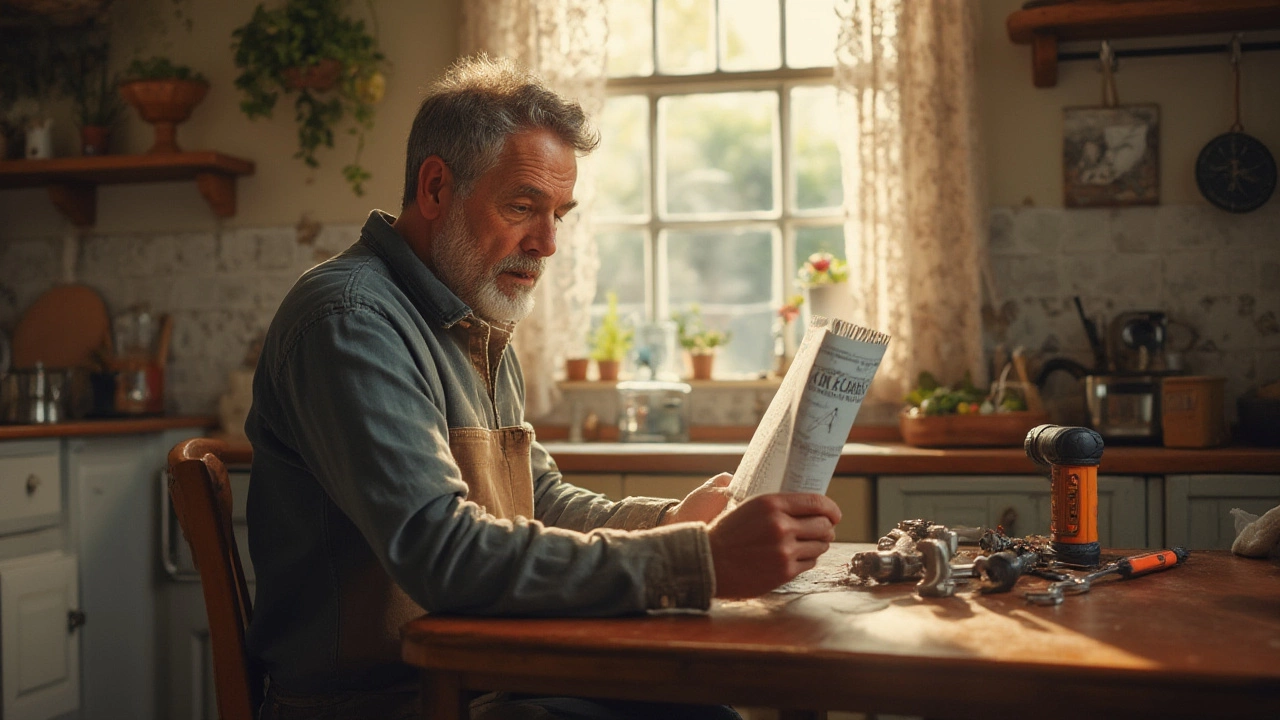Ever gone to wash your hands on a chilly morning, only to realize your house feels like a walk-in freezer? The boiler's dead. Weekly, someone somewhere in the UK searches "can I fix my boiler myself?" — hoping for a miracle fix and a break from icy showers. Boiler failures strike fast, and they can throw your whole home into chaos. Is having a screwdriver and grit enough to solve the problem, or is a boiler a beast better left to pros? Knowing what you can do — and what you shouldn’t — might save you money, headaches, and maybe even a call to emergency services.
Understanding Your Boiler: What's Under the Hood?
Boilers are not mysterious black boxes, but they do pack a lot of heat (literally and figuratively). They rely on a mixture of water, heat, electricity, and (more often than not) gas — a potentially dangerous combination if you poke in the wrong place. Generally, modern boilers break down into three main types: combi, system, and regular (conventional). Each has its quirks, but most share the same basic process: cold water enters, gets heated by burning gas or electricity, and hot water gets piped to your taps or radiators.
Inside, you'll find various bits: a heat exchanger, pump, expansion vessel, thermostat, circuit board, pressure gauge, diverter valve, and more. Combi boilers, which are the most common in the UK, are specially compact but even more tightly packed. Their design crams central heating and hot water delivery into one neat box. A daunting sight if you ever open the front panel. Manufacturers specifically warn homeowners not to mess with the sealed sections — these are meant for professionals only, mainly because of the risk of gas leaks, carbon monoxide, and explosive accidents.
You probably know that a faulty boiler can emit carbon monoxide, an odorless and deadly gas. In 2023, around 52 fatal CO poisoning accidents in Europe were linked to faulty heating systems, including boilers, according to WHO. That’s why tampering with gas connections or the sealed parts inside is never a wise DIY plan.
So while you might be handy enough to fix some squeaks around the home, boilers bring much higher stakes. The law in the UK is tight on this: it's illegal for anyone who is not Gas Safe registered to remove boiler covers or work on the gas parts. Getting that out of the way: serious stuff is off the DIY table. But maintenance and small fixes? There’s still room for you to show off your wits — if you play it safe.
Common Boiler Problems: Spot the Usual Suspects
More than half of boiler callouts are for things you can at least diagnose yourself, if not fully repair. Let’s run through the usual suspects. Every autumn in Britain, boilers are switched back on after a summer snooze, and suddenly radiators are stone cold. It’s an annual ritual: families googling why the boiler isn’t kicking in.
- No heat or hot water: Could be anything from thermostat issues, to low pressure, to a tripped power switch.
- Leaking and dripping: Water under your boiler can mean anything from a loose connection to a cracked component. Urgent if it’s from the pressure valve or pump seal.
- Strange noises: Kettling (like a kettle boiling), banging, clanking, or even whistling often comes from limescale or trapped air. Not usually dangerous immediately, but not a good sign long-term.
- Boiler switches off by itself: Usually, low water pressure, a faulty thermostat, or dirty system water.
- Low boiler pressure: Ideal is 1.0–1.5 bar on most models. Anything lower and the system struggles to pump heat everywhere.
Here’s a practical stat: according to Which?, close to 30% of boiler breakdowns stem from low pressure or pilot light issues, both of which are generally safe and easy for homeowners to sort themselves.
Diagnosing isn’t fixing — but getting the right sense of what’s wrong saves lots of guesswork if you do call out an engineer. Worried about doing even that? Check your user manual; most have troubleshooting guides, with error codes pointing out exactly what went wrong. Apps from big boiler brands (like Worcester Bosch or Vaillant) offer step-by-step help.

DIY Boiler Repair: What You Can (and Can’t) Safely Do
Okay, so what fixes are on the menu? First, you’ve got some legal and safety boundaries here. Anything GAS-related (connections, burners, pressure vessels, inner combustion chambers) is totally hands-off for DIYers in the UK, as well as most parts of Europe. Don’t even think about it unless you’re dreaming of new wallpaper courtesy of the fire brigade.
The good news: Some basic care and minor troubleshooting are 100% safe and encouraged. Here are key things you can do at home, without risk or falling foul of the law:
- Check and top up boiler pressure: Most boilers have a pressure gauge at the front. Look for a reading between 1.0 and 1.5 bar. If it’s below, you can use the filling loop (usually located underneath) to add water. Your manual will give the exact steps. Just go slow — add a little, close the loop, check again. Overfilling is a rookie mistake.
- Reset the boiler: Boilers sometimes trip their own safety cut-off. Resetting is almost always as simple as pressing a button, often with a toothpick or a blunt pen (no, don’t poke with a knife, trust me). Never more than twice. If it keeps tripping, you have a real fault.
- Bleed your radiators: Cold at the top, hot at the bottom? You likely have trapped air. Radiator keys are cheap and fiddling with them is satisfying (until scalding water shoots out unexpectedly — see my right sock last winter). Open the valve gently, have a towel ready, close once water starts escaping smoothly.
- Check for common power faults: Trip switches and plug fuses go out more often than you’d think, especially after storms or big surges. Make sure the boiler is actually getting electricity.
- Thaw out the condensate pipe: In freezing weather, plastic condensate pipes (usually white or grey and running outside) can freeze solid, causing the boiler to cut out. Pouring warm (not boiling) water over the pipe or wrapping it with a warm towel works wonders.
- Check thermostats and timers: Kids (looking at you, Callista) love pressing buttons. Make sure the timer is set, room thermostat dialed up, and batteries (if any) are good.
But here’s the hard stop: anything involving gas or the actual inner parts beyond the basic casing is a no-go area unless you’re Gas Safe registered. Even changing some printed circuit boards or swapping out certain valves is legally restricted. If your boiler’s making weird smells (eggs, burning, or metallic) or you actually see flame where it shouldn’t be, evacuate and call for help. Safety first, always.
Quick reality check table for what’s safe for you:
| Task | DIY? | Notes |
|---|---|---|
| Top up pressure | Yes | Follow manual – avoid overfilling |
| Bleed radiators | Yes | Use radiator key and towel |
| Reset boiler | Yes | Never more than twice |
| Replace boiler parts | No | Leave to Gas Safe engineer |
| Condensate pipe thaw | Yes | Use warm water, never boiling |
| Mess with gas supply | No | Strictly illegal |
One last thing — DIY repairs might invalidate your warranty. Regular boiler servicing (by a pro) is required to keep that cover intact. Avoid the temptation to impress your family with a YouTube tutorial gone rogue.
"Gas appliances that have not been maintained properly are a major cause of accidental carbon monoxide poisoning... Get your boiler checked regularly and avoid DIY repairs on the burner or gas controls." – Health and Safety Executive, UK
Prevention: Keep Your Boiler Running Smoothly
Want your boiler to run smoothly and avoid panic attacks mid-winter? Most problems are preventable with small habits and timely checks. Here’s what actually pays off:
- Check the pressure gauge monthly, not just when the boiler acts up. Small leaks can slowly lower pressure without making a mess.
- Bleed the radiators, especially after switching from summer back to heating season. Air sneaks into pipes no matter how airtight your system claims to be.
- Listen for weird noises. A little hum is fine, but banging or whistling usually means limescale — ask a pro about scale reducers or cleaning. If noises suddenly start up, get it checked before it gets worse (or more expensive).
- Keep the area around your boiler clear. Piling boxes, laundry, or cleaning gear can block vital air vents or even cause dangerous overheating.
- Book a pro service every year. According to British Gas and industry stats, boilers over 8 years old are far more likely to break down. Yearly checks catch faults early, and it’s usually cheaper than emergency repairs.
One of the best things you can do is keep records of any errors, odd symptoms, or when you topped up the pressure. If you have to call a boiler engineer, showing a clear log saves so much time and probably cost.
If you’re a parent (like me, with Callista always curious about how things work), make sure kids and pets are kept well away from the boiler, especially right after resets or repairs. Even a switched-off boiler can have hot surfaces or sharp metal inside the casing.
Lastly, remember your legal responsibility: any rented property must have a landlord-provided Gas Safe certificate for all appliances every year. If you’re renting, never attempt repairs — call your letting agent or landlord instead.
There’s an odd sense of pride when your boiler whirs back to life after a quick reset or pressure top up. But don’t let that feeling tempt you past the boundaries of what’s safe boiler maintenance. DIY tips work best for simple stuff — anything bigger or that smells fishy, call in someone with the right badge. Stay warm, stay smart, and keep those morning showers hot.


